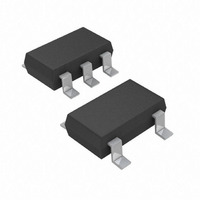ADP1714AUJZ-1.8-R7 Analog Devices Inc, ADP1714AUJZ-1.8-R7 Datasheet - Page 12

ADP1714AUJZ-1.8-R7
Manufacturer Part Number
ADP1714AUJZ-1.8-R7
Description
300mA CMOS Low-Dropout Regular
Manufacturer
Analog Devices Inc
Datasheet
1.ADP1713-3.3-EVALZ.pdf
(16 pages)
Specifications of ADP1714AUJZ-1.8-R7
Regulator Topology
Positive Fixed
Voltage - Output
1.8V
Voltage - Input
2.5 ~ 5.5 V
Number Of Regulators
1
Current - Output
300mA (Max)
Current - Limit (min)
380mA
Operating Temperature
-40°C ~ 125°C
Mounting Type
Surface Mount
Package / Case
TSOT-23-5, TSOT-5, TSOP-5
Lead Free Status / RoHS Status
Lead free / RoHS Compliant
Voltage - Dropout (typical)
-
Lead Free Status / RoHS Status
Lead free / RoHS Compliant
Other names
ADP1714AUJZ-1.8-R7TR
Available stocks
Company
Part Number
Manufacturer
Quantity
Price
Company:
Part Number:
ADP1714AUJZ-1.8-R7
Manufacturer:
AD
Quantity:
60
ADP1712/ADP1713/ADP1714
APPLICATION INFORMATION
CAPACITOR SELECTION
Output Capacitor
The ADP1712/ADP1713/ADP1714 are designed for operation
with small, space-saving ceramic capacitors, but they function
with most commonly used capacitors as long as care is taken about
the effective series resistance (ESR) value. The ESR of the output
capacitor affects stability of the LDO control loop. A minimum of
2.2 μF capacitance with an ESR of 500 mΩ or less is recommended
to ensure stability of the ADP1712/ADP1713/ADP1714. Transient
response to changes in load current is also affected by output
capacitance. Using a larger value of output capacitance improves
the transient response of the ADP1712/ADP1713/ADP1714 to
large changes in load current. Figure 31 and Figure 32 show the
transient responses for output capacitance values of 2.2 μF and
10 μF, respectively.
Input Bypass Capacitor
Connecting a 2.2 μF capacitor from the IN pin to GND reduces
the circuit sensitivity to printed circuit board (PCB) layout,
Figure 31. Output Transient Response, C
Figure 32. Output Transient Response, C
V
FROM 10mA TO 300mA
V
FROM 10mA TO 300mA
OUT
OUT
RESPONSE TO LOAD STEP
RESPONSE TO LOAD STEP
TIME (20μs/DIV)
TIME (20μs/DIV)
V
V
C
C
OUT
OUT
V
V
C
C
IN
OUT
IN
OUT
IN
OUT
IN
OUT
= 5V
= 2.2µF
= 2.2 μF
= 10 μF
= 5V
= 10µF
= 3.3V
= 2.2µF
= 3.3V
= 10µF
Rev. A | Page 12 of 16
especially when long input traces or high source impedance are
encountered. If greater than 2.2 μF of output capacitance is
required, increasing the input capacitor to match is recommended.
Input and Output Capacitor Properties
Any good quality ceramic capacitors can be used with the
ADP1712/ADP1713/ADP1714, as long as they meet the
minimum capacitance and maximum ESR requirements.
Ceramic capacitors are manufactured with a variety of
dielectrics, each with different behavior over temperature and
applied voltage. Capacitors must have a dielectric adequate to
ensure the minimum capacitance over the necessary temper-
ature range and dc bias conditions. X5R or X7R dielectrics with
a voltage rating of 6.3 V or 10 V are recommended. Y5V and
Z5U dielectrics are not recommended, due to their poor
temperature and dc bias characteristics.
CURRENT LIMIT AND THERMAL OVERLOAD
PROTECTION
The ADP1712/ADP1713/ADP1714 are protected against damage
due to excessive power dissipation by current and thermal over-
load protection circuits. The ADP1712/ADP1713/ADP1714 are
designed to current limit when the output load reaches 500 mA
(typical). When the output load exceeds 500 mA, the output
voltage is reduced to maintain a constant current limit.
Thermal overload protection is included, which limits the
junction temperature to a maximum of 150°C (typical). Under
extreme conditions (that is, high ambient temperature and
power dissipation), when the junction temperature starts to rise
above 150°C, the output is turned off, reducing the output
current to zero. When the junction temperature drops below
135°C (typical), the output is turned on again and output
current is restored to its nominal value.
Consider the case where a hard short from OUT to ground occurs.
At first the ADP1712/ADP1713/ADP1714 current limit, so that
only 500 mA is conducted into the short. If self heating of the
junction is great enough to cause its temperature to rise above
150°C, thermal shutdown activates, turning off the output and
reducing the output current to zero. As the junction temper-
ature cools and drops below 135°C, the output turns on and
conducts 500 mA into the short, again causing the junction
temperature to rise above 150°C. This thermal oscillation
between 135°C and 150°C causes a current oscillation between
500 mA and 0 mA, which continues as long as the short
remains at the output.
Current and thermal limit protections are intended to protect
the device against accidental overload conditions. For reliable
operation, device power dissipation needs to be externally
limited so junction temperatures do not exceed 125°C.









